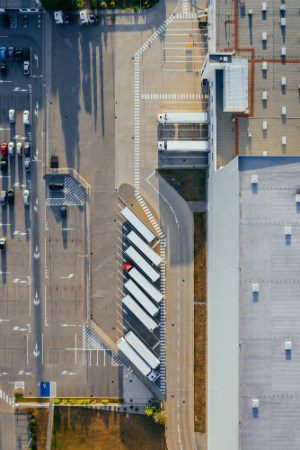Setting The Scene: Industrial Pollution in San Diego County


Here in San Diego County, urban runoff is the largest contributor of pollutants into our region’s waterways. Stormwater runoff from industrial facilities in particular significantly contributes to these pollution threats. Certain types of industrial operations conducted in the San Diego region are known to handle or generate a variety of pollutants which settle on the facilities’ outdoor surfaces, where they are exposed to rainwater during winter storms. That stormwater picks up these industrial pollutants and carries them into storm drains, through our canyons, into our rivers, and into our coastal waters.
The industrial facilities producing industrial pollutants include landfills, mining operations, recycling centers, scrap metal yards, and water reclamation plants—just to name a few. Pollutants associated with such industrial activities include toxic metals such as lead, iron, and zinc, harmful pathogens such as e. coli and enterococcus, excessive nutrients which can cause algal blooms and fish die offs, and other chemical substances known to have toxic and carcinogenic effects on human health and the environment.
Strategies to prevent pollution and protect water quality
Fortunately, California regulates such pollution through the state’s Industrial Storm Water Permit in conjunction with the federal Clean Water Act. These laws require industrial facilities to minimize pollutants in their stormwater discharges, and that these discharges meet state and federal water quality standards. To ensure these standards are attained, the Industrial Storm Water Permit requires regulated facilities to implement Best Management Practices, or BMPs, that reduce or eliminate discharges of polluted storm water from their property. BMPs can take many forms and their effectiveness and implementation will vary facility-by-facility. Our favorite types of BMPs are those that conserve and treat water, such as capturing rain and stormwater for on-site use. Similar to the rain barrels used in homes throughout the county to capture water for gardening, so too can facilities capture water for various uses. These BMPs are essentially small-scale multi-benefit solutions – preventing pollution while also providing a water source or saving energy or both.
Where Coastkeeper comes in: Local Examples of BMPs
Facilities that Coastkeeper has worked with to improve their BMPs have implemented a number of these strategies. One facility now captures their stormwater in large retention ponds, treats this water, and uses it for landscaping. Another facility, a mining operation, expanded their detention basins and now uses that water for their mining processes. Similar facilities also use their captured water for cement mixtures. Lastly, one landfill has increased their detention basin capacity for dust suppression and landscaping (think hydroseeding). Dust suppression is incredibly important for landfills because of the different pollutants present, and is another type of BMP used to reduce pollutant escape. These large facilities would otherwise have imported water for these uses, but now they’re offsetting the need for imported water.
BMPs as water- and energy-saving tactics
As our previous articles on the water-energy nexus have discussed in detail, importing water is extremely energy-intensive and expensive. Just the process of transporting and treating this water also releases more carbon into our atmosphere than, say, reusing and recycling the water already present in San Diego. Now, a number of industrial facilities across the region use water throughout their property—water that largely comes from imported sources and ends up – after only one use – in our ocean. Rather than contributing to this one-way street (or stream), facilities should join in conservation efforts by capturing and reusing their water for those same purposes. Capturing and treating stormwater for on-site use not only saves these facilities the long-term costs of using imported water and prevents most storm water and pollutants from leaving their property, but it also protects our local waters and atmosphere. Furthermore, the implementation of stormwater-capturing BMPs creates green jobs and plays a significant role in reducing the pollutants in waterbodies in disproportionately-affected environmental justice communities. It’s a win-win for everyone!













